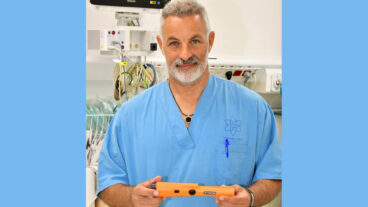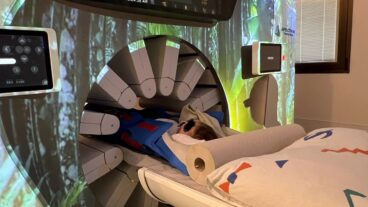Medical research with stem cells in Israel includes a wide range of efforts, including combating heart disease and diabetes.While the use of embryonic stem cells for research continues to be a hotly contested issue in the United States, Israel has placed itself at the forefront of research in this field. Interestingly enough, it is Judaism’s view of when life begins that is promoting public agreement on this issue in Israel. Biblical and Talmudic law consider the status of human life to be a gradual process that is attained during the development of the embryo – rather than at fertilization, which is the view of many Christian denominations.
In the Halacha, the catalog of laws in the Talmud, materials outside the uterus are considered to be genetic materials and not living beings and as such have no legal status. Outside of the womb, an embryo is analogous to gametes, sperm and other material that may be manipulated for therapeutic purposes, but not wasted.
Jewish law determines that during the first forty days after conception the fetus is considered “mere water” (according to the laws of impurity). At forty days, the embryo is considered to be a “formed” human fetus. However, the fetus gains full human status, equal to that of the mother, only at birth. Muslims, like Jews, view human status as a developmental process. According to Islamic law, the use of embryos for therapeutic purposes is permissible, as long as such use is before the embryo acquires a soul, on the fortieth day after fertilization.
“Many of the ethical debates regarding the use of embryonic stem cell research have to do with what is characterized as the potential of the embryo to become a human being,” said Asa Kasher, professor of professional ethics and philosophy of practice at Tel-Aviv University.
Kasher, who is also a member of the Israel Academy of Sciences and Humanities’ Bioethics Advisory Committee on the Use of Embryonic Stem Cells for Therapeutic Research, said that most of the talk about the use of stem cells is designed to create a picture of a fetus with a head, eyes, mouth – essentially a “baby” in the mother’s womb. However, stem cells are no more than a collection of cells at the stage at which they are extracted and do not have the potential to become full-fledged human beings.
“One must differentiate between the potential and the actual,” he said. “Every baby has the potential of becoming a senior citizen – that does not mean that every baby will actually live to be a senior citizen. Just as every single person has the potential to be married and every married person has the potential to be divorced.” So the mere fact that a theoretical potential exists should not serve as a basis for a prohibition against stem cell research, he said.
“… There is a clear prohibition against using embryos (that are still alive within the body). But there is a Halachic opinion that outside the body, (the embryo) has no inherent potentiality and therefore its use is permissible,” said Rabbi Yaakov Weiner, head of the Jerusalem Center for Research.
“Jewish law distinguishes between a pre-implanted embryo – that is still in a test tube – and an embryo implanted in a womb,” Dr. Mordechai Halperin, Director of the Schlesinger Institute for Medical Halachic Research at Shaare Zedek Hospital told the Jerusalem Post recently. “The test tube embryo has a very low probability of ever reaching the neonatal stage and so it doesn’t enjoy the same sacred title to life as an implanted embryo.”
Most stem cell research in Israel is conducted within academic institutions, although startups are increasingly being established, sometimes in collaboration with various universities, to capitalize on the future commercialization of the research.
The following is a brief overview of some of the major stem cell research projects in Israel:
Growing heart cells – A group of researchers from the Bruce Rappaport faculty of Medicine at the Technion and the Rambam Medical Center was the first in the world to succeed at growing human heart cells in a lab from embryonic stem cells. Their findings were published in the “Journal of Clinical Investigation” (Aug. 1, 2001). Dr. Itzhak Kehat of the Technion said, “We have shown that we are able to produce cells that can functionally connect and beat with the host tissue.” Kehat said research is continuing in a number of directions, including one that may lead to the ability to select specific types of heart tissue.
Insulin producing cells – Research led by Dr. Karl Skorecki, director of Nephrology, Rambam Medical Center, published in the Aug. 4, 2001 issue of “Diabetes” has shown that it is possible to produce insulin from stem cells. Skorecki said that some of areas that he is continuing his research include, “The enrichment and purification of stem cells as well as the scaling up process. Since we know it takes between 300 million to one billion beta islet cells for each transplant, a method for producing large quantities of cells must be devised.”
Growth factors – Prof. Nissim Benvenisty of the Hebrew University heads a team that has tested eight growth factors (mostly proteins), found in the human body. The findings show that no single growth factor is responsible for the differentiation into specific cell types and that some growth factors actually inhibit cell growth. So by blocking specific growth factors, it might be possible to grow certain tissues. Whether certain cells develop into heart or brain cells may be influenced by groups of factors.
Bone marrow transplant therapy – Gamida Cell, a startup that uses stem cells taken from umbilical cord blood, is pioneering work in this field. Dr. Avi Treves, Gamida Cell’s chief executive, said, “Our therapy involves creating frozen units of umbilical cord stem cells that will be readily available for bone marrow transplant, and will be less risky and less expensive than current options.”
Yael Zisling Adar is the publisher of Gems in Israel.












